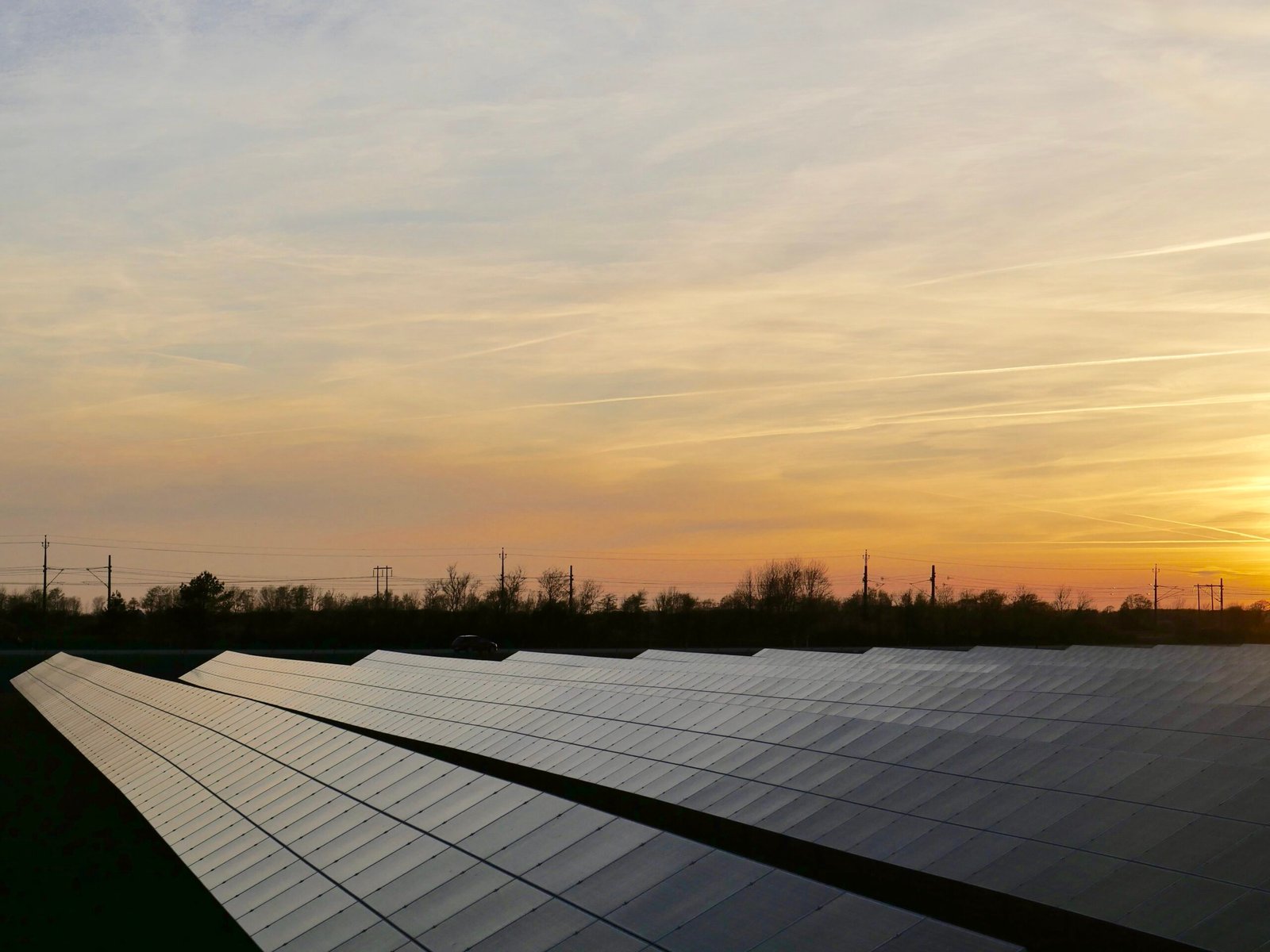In today’s fast-evolving world, renewable energy sources have become the foundation of sustainable living. Among them, solar panel generation stands out as one of the most efficient and environmentally friendly methods of producing electricity. As more countries and homeowners pivot toward green energy, understanding the mechanisms, advantages, challenges, and scope of solar panel generation is crucial.
Table of Contents
This comprehensive blog explores everything you need to know about solar panel generation, from how it works to how you can implement it in your home or business. Whether you’re a homeowner looking to reduce your electricity bills or a business owner exploring solar investments, this guide is your one-stop solution.
What is Solar Panel Generation?
Solar panel generation is the process of converting sunlight into electricity using photovoltaic (PV) technology, a fundamental component of renewable energy systems. It is widely used in residential, commercial, and industrial settings, harnessing the sun’s energy to generate clean, renewable power for various applications.
How Does Solar Panel Generation Work?
At the heart of solar panel generation is the photovoltaic effect, a process by which photovoltaic cells (usually made of silicon) convert sunlight into direct current (DC) electricity. This DC power is then passed through an inverter, which converts it to alternating current (AC)—the standard electricity used in homes and businesses.
Key Components of a Solar Power Generation System
1. Solar Panels (Photovoltaic Modules): Solar panels are the primary component responsible for capturing sunlight and converting it into direct current (DC) electricity. They consist of multiple photovoltaic cells made from semiconductor materials like silicon. These cells generate electricity through the photovoltaic effect when exposed to sunlight.
2. Inverter: The inverter plays a crucial role by converting the DC electricity produced by the solar panels into alternating current (AC) electricity, which is the standard used by most household appliances and the electrical grid. There are different types of inverters, including string inverters, microinverters, and hybrid inverters, each suited to specific system configurations.
3. Mounting System (Racking): Mounting systems secure the solar panels to rooftops or ground-based structures. They are designed to withstand various environmental conditions and to position the panels at optimal angles for maximum sunlight exposure.
4. Battery Storage (Optional): Batteries store excess electricity generated during peak sunlight hours for use during periods of low sunlight or at night. This component is especially important for off-grid systems or in areas with unreliable grid power. Common battery types include lead-acid and lithium-ion batteries.
5. Charge Controller: A charge controller regulates the voltage and current coming from the solar panels to the batteries. It ensures that batteries are charged efficiently and prevents overcharging, which can extend battery life and improve system performance.
6. Wiring and Electrical Components: Proper wiring and electrical components are essential for safely conducting electricity between the system’s components. This includes cables, connectors, junction boxes, and circuit breakers, all designed to handle the system’s electrical load.
7. Monitoring System: Monitoring systems track the performance of the solar power system, providing real-time data on energy production and consumption. This information helps in identifying issues promptly and optimizing system efficiency.
Types of Solar Panel Generation Systems
There are three primary types of solar panel generation systems: Grid-Tied, Off-Grid, and Hybrid. Each system offers distinct features, benefits, and considerations, making them suitable for different energy needs and circumstances.
1. Grid-Tied Solar Systems
Grid-tied systems are connected to the public electricity grid, allowing solar energy to be used during the day and drawn from the grid when it is insufficient. Key features include net metering, where excess energy can be credited to the grid, and cost-effectiveness due to the absence of battery storage. However, grid-tied systems do not provide power during grid outages unless paired with additional equipment. Ideal for homes and businesses in areas with reliable grid access and favorable net metering policies, these systems generate solar power during the day and utilize grid electricity when solar energy is insufficient. However, power outages still affect the system, making them suitable for urban and suburban homeowners or businesses with reliable grid connections.
2. Off-Grid Solar Systems
Off-grid solar panel generation systems operate independently and are not connected to the electricity grid. They store electricity in batteries for use during low sunlight periods. These systems offer complete energy independence and require battery storage and often a backup generator. They are ideal for remote areas without grid access or those seeking self-sufficiency. However, they are typically more expensive due to battery and storage needs. Backup generators are often included to provide power during extended periods of low solar production. Off-grid systems are ideal for remote homes, cabins, or facilities where grid connection is unavailable or impractical.
3. Hybrid Solar Systems
Hybrid systems combine elements of grid-tied and off-grid systems, providing energy independence and grid support. They store excess solar energy for use during outages or peak demand times, while remaining connected to the grid for when battery or solar power is insufficient. Hybrid systems offer a balance between reliability and independence, making them ideal for areas with unreliable grid power or users seeking backup power solutions while still benefiting from grid connectivity. They are best suited for locations with unreliable grids or those seeking to reduce dependency while maintaining backup power.
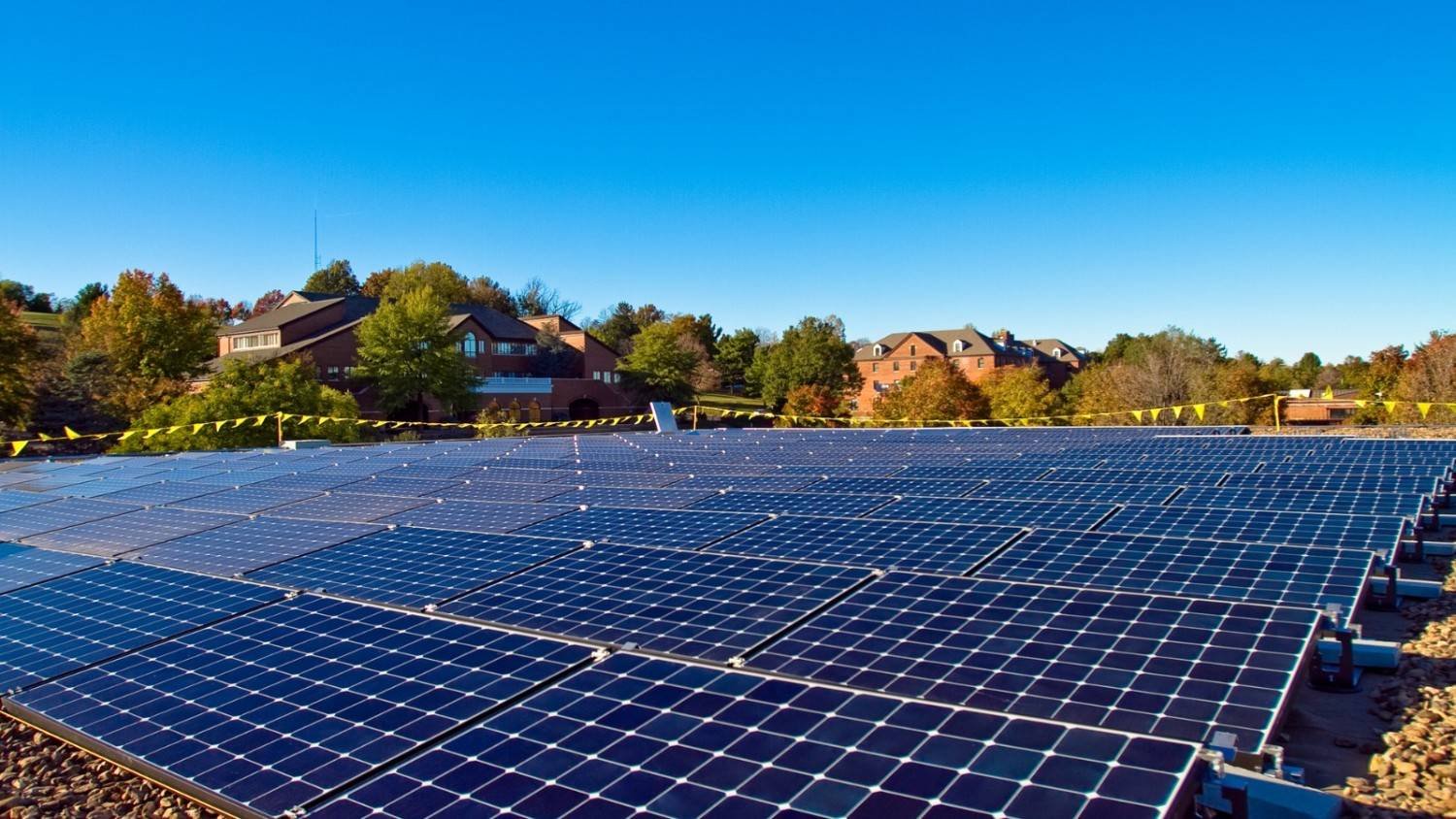
Factors That Influence Solar Panel Generation Efficiency
The efficiency of solar panel generation depends on several critical factors:
1. Sunlight Availability
Solar energy received by a panel directly impacts its electricity generation. Regions with higher solar irradiance and longer daylight hours enable panels to produce more energy. Areas closer to the equator receive more consistent and intense sunlight, resulting in higher electricity production. Peak sun hours are critical for generation estimates. Solar panel generation in high irradiance zones is a key focus for SEO.
2. Panel Orientation & Tilt
Solar panels should be positioned to face the sun optimally throughout the day, with panels facing true south or true north in the Northern Hemisphere generally performing better. The angle should match the location’s latitude for optimal results. The direction and angle of solar panel installation significantly affect their exposure to sunlight, with true south in the Northern Hemisphere. The optimal tilt angle varies based on geographic location and the sun’s path.
3. Temperature
Solar panels require sunlight to generate electricity, but excessive heat can reduce their efficiency. Most are tested at 25°C (77°F), and for every degree Celsius increase above 25°C, panel efficiency can decrease by approximately 0.38%. Panels work best in cool, sunny climates, and high temperatures can decrease efficiency by 0.3% to 0.5% per °C above 25°C.
4. Quality of Solar Panels
The efficiency of solar panels is influenced by the materials and manufacturing processes used. Monocrystalline panels generally offer higher efficiency rates than polycrystalline or thin-film panels. Advancements in technology continue to improve performance and durability, with monocrystalline panels being the most efficient (18-22%).
5. Dust, Dirt, and Maintenance
Dirt, bird droppings, and snow accumulation on solar panels can block sunlight, reducing efficiency by 5% or more. Regular cleaning and inspections are crucial to ensure optimal performance. Even a thin layer of dust can reduce solar panel generation loss due to dirt accumulation.
5-Step Guide to Understanding Solar Panel Generation
Sunlight Activation
Solar panel generation begins with sunlight capture, with silicon panels being the primary component. The efficiency of solar panels is largely dependent on the amount of sunlight they can capture. Solar cells, embedded in the panels, absorb sunlight throughout the day. The more sunlight the panels receive, the more electricity they can generate. Solar panels, typically installed on rooftops, are designed to capture as much sunlight as possible. When photons from sunlight hit the photovoltaic cells, they excite electrons, initiating the generation of electricity.
Photovoltaic Effect
The photovoltaic effect is a fundamental mechanism in solar panel electricity generation. It involves the absorption of sunlight by photons, which cause electrons to move through the solar cells’ material, generating direct current (DC) electricity. This electricity can be stored in batteries for later use or used directly in the home. PV cells, typically made of silicon, absorb photons, exciting electrons and creating electron-hole pairs that move through the material, generating DC electricity.
Conversion to Alternating Current (AC)
Solar panels generate direct current (DC) electricity, which is used by most homes and businesses. A solar inverter is crucial in converting this DC electricity into AC electricity, which is suitable for everyday appliances. Without an inverter, most electrical devices cannot be powered directly. The inverter converts the DC electricity into AC, making it suitable for home use or grid-feeding. The inverter for solar panels plays a vital role in ensuring the efficient use of solar energy.
Distribution of Electricity
Solar power distribution involves converting electricity to AC, which can be used immediately in homes or businesses or stored for later use. Grid-tied systems, connected to the local power grid, can generate excess electricity that can be sent back to the grid, earning credits or payments through net metering. Some systems also include solar batteries for storage during low solar production periods. Once converted to AC, the electricity can be used directly in household appliances. If the system includes a battery storage solution, excess electricity can be stored for later use.
Monitoring and Maintenance
Solar panel systems require regular monitoring to ensure optimal efficiency. Modern systems often come with software that tracks energy production, consumption, and efficiency. Regular cleaning and maintenance are crucial for optimal performance. Monitoring tools provide real-time data on energy generation and alert homeowners to any issues, maximizing the benefits of the solar panel system. Solar panel monitoring tools track energy production and consumption, ensuring optimal performance. Regular maintenance, such as cleaning panels and checking for obstructions, is also essential for maintaining efficiency. Monitoring systems also allow for timely interventions.
Benefits of Solar Panel Generation
1. Reduced Electricity Bills
Solar panels can significantly reduce electricity costs by generating your own electricity, reducing reliance on the grid. Net metering allows surplus energy to be sent back to the grid, often earning credits or payments. By installing solar panels, you can save on your utility bills and potentially earn credits or payments through net metering programs.
2. Renewable and Clean Energy Source
Solar energy is a renewable resource that doesn’t deplete over time, producing no harmful greenhouse gas emissions or air pollutants. Solar panel generation relies on sunlight, a finite and renewable resource, and no fuel is required beyond the sun itself. This helps reduce dependence on non-renewable resources like coal, oil, and natural gas. Sustainable solar power is a promising alternative to fossil fuels.
3. Energy Independence
Solar panel generation offers energy independence, reducing dependence on the grid and protecting against fluctuating prices. It is particularly beneficial in remote areas and regions prone to power outages. Off-grid solar power provides greater control over energy supply, ensuring solar power security.
4. Increase in Property Value
Solar energy systems in homes often increase property values and sell faster than non-solar homes. These systems are viewed as upgrades, similar to modern kitchens or home automation systems. Studies show that properties with solar panels sell faster and at higher prices, making them a premium property.
5. Low Maintenance
Solar panel systems require minimal maintenance, requiring regular cleaning and inspections to maintain efficiency. Reliable manufacturers offer warranties ranging from 20 to 25 years, making them a cost-effective and long-lasting energy system. These systems are built to last, with low operational costs and a range of 20 to 25 years of service.
6. Inverter Efficiency
Inverters convert solar panels’ direct current (DC) into alternating current (AC) for household appliances, affecting system performance. High-quality inverters can achieve efficiencies of 95% or higher, resulting in a 95%-99% conversion efficiency. Poor-quality inverters waste more energy, highlighting the importance of inverter role in solar panel generation efficiency.
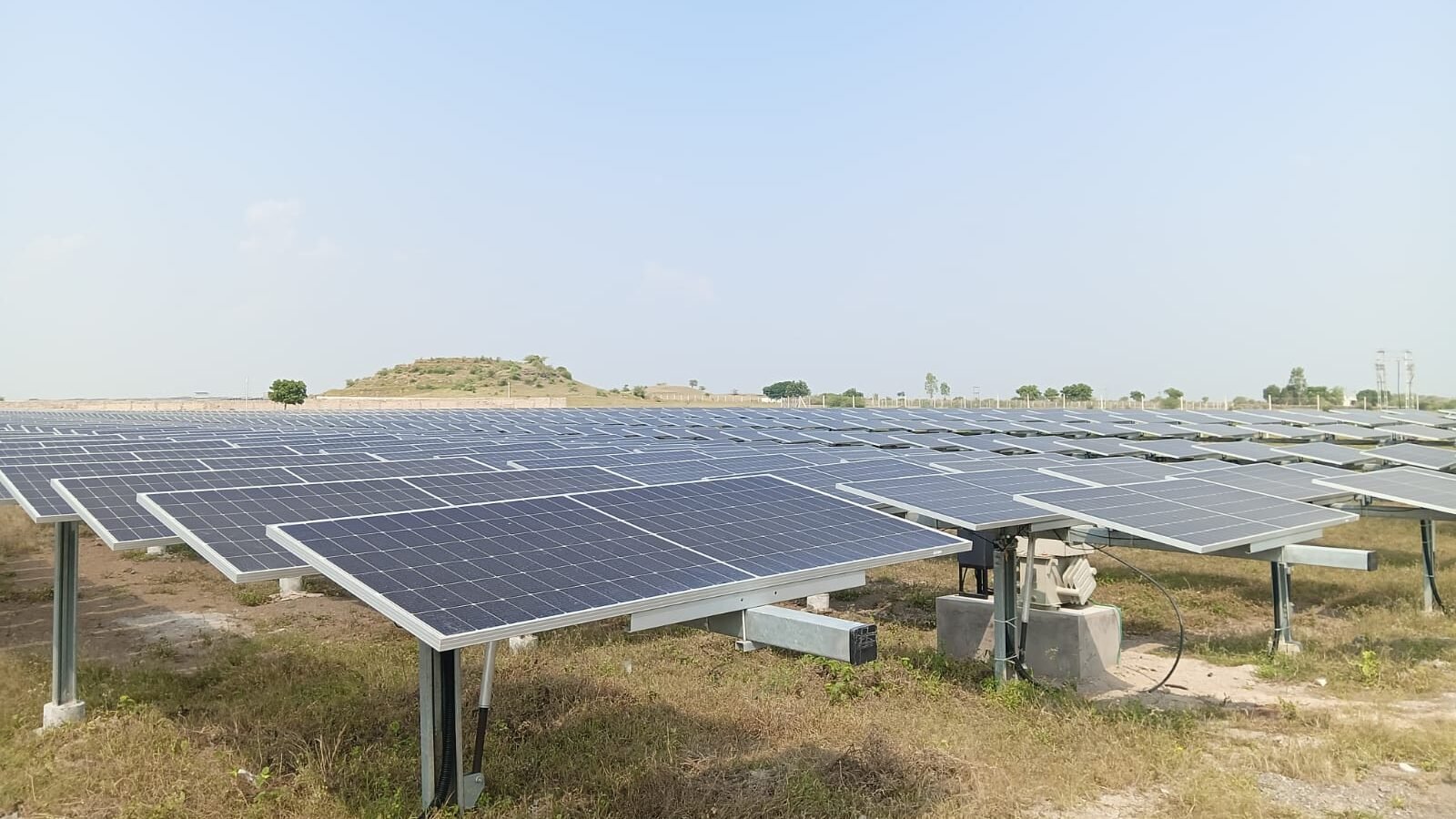
Calculating Solar Panel Generation Potential
Step 1: Determine Your Solar Panel Specifications
- Number of Panels: Decide how many panels you plan to install.
- Panel Wattage: Common residential solar panels range from 300W to 450W.
Example:
- If you plan to install 10 panels of 400W each:
- Total Capacity = 400W × 10 = 4000W or 4 kW
Step 2: Estimate Peak Sunlight Hours
Peak Sun Hours refer to hours when sunlight intensity is high enough (1,000 W/m²) to generate maximum output from solar panels. These vary by region and season.
- In India, the average is 4 to 6 hours/day.
- Use local meteorological data or tools like Global Solar Atlas to get accurate figures.
Example:
Ahmedabad gets about 5.5 peak sun hours/day.
Step 3: Apply the Solar Output Formula
Use the following formula to estimate daily energy production:
Daily Output (kWh) = Panel Wattage × Number of Panels × Peak Sunlight Hours × 0.75
The factor 0.75 accounts for system losses due to factors like inverter efficiency, temperature variations, and shading.
Example Calculation:
If you have 5 panels, each rated at 300W:
Daily Output = 300W × 5 × 5 hours × 0.75 = 5.625 kWh/day
Over a month, this equates to approximately 168.75 kWh.
Step 4: Utilize Online Solar Calculators
For more precise estimates, consider using online tools that factor in local weather patterns and system specifics:
- NREL’s PVWatts Calculator: Provides detailed energy production estimates based on location and system details.
- Global Solar Atlas: Offers solar resource data and photovoltaic power potential globally.
| Number of Panels | Panel Wattage | System Size (kW) | Daily Output (kWh) | Monthly Output (kWh) |
|---|---|---|---|---|
| 5 | 300W | 1.5 kW | 5.6 kWh | 168 kWh |
| 10 | 400W | 4.0 kW | 15.0 kWh | 450 kWh |
| 15 | 450W | 6.75 kW | 25.3 kWh | 759 kWh |
Solar Panel Generation in Residential Settings
- National Outlook: India’s residential rooftops hold a vast potential of approximately 637 GW, capable of meeting the entire electricity demand of the country’s residential sector if fully harnessed.
- Ahmedabad’s Advantage: Situated in Gujarat, Ahmedabad benefits from high solar irradiance, making it an ideal location for solar installations. The city experiences an average of 5.5 to 7.5 peak sun hours per day, ensuring consistent solar energy generation throughout the year.
How It Works
- Solar panels installed on rooftops absorb sunlight.
- Photovoltaic cells within the panels convert sunlight into direct current (DC) electricity.
- An inverter converts DC into alternating current (AC) – the form of electricity used in homes.
- The electricity powers home appliances, and any surplus is stored or exported to the grid.
| System Size | Avg Daily Output | Avg Monthly Output | Covers This Much Usage |
|---|---|---|---|
| 1 kW | 4 – 5 kWh/day | 120 – 150 kWh | Lights, fan, TV, fridge |
| 3 kW | 12 – 15 kWh/day | 360 – 450 kWh | Small 2–3 BHK house |
| 5 kW | 20 – 25 kWh/day | 600 – 750 kWh | Medium-to-large homes |
Solar Panel Generation for Businesses
It refers to the use of commercial solar power systems to generate electricity for business operations. These systems are typically installed on rooftops, open land, or parking lots, and are designed to meet a substantial portion—or even 100%—of a business’s energy needs.
Benefits of Solar Panel Generation for Businesses
1. Major Cost Savings
Solar power allows businesses to significantly reduce monthly utility bills. With a lifespan of 25–30 years, the system can pay for itself in just 3–6 years, yielding decades of virtually free electricity.
2. Attractive ROI
Thanks to energy bill savings, tax benefits, and incentives, commercial solar systems offer high returns and often outperform traditional investments.
3. Tax Incentives & Depreciation
In many countries, including India:
- Accelerated Depreciation (AD) benefits can save up to 40–50% of the system cost in taxes.
- Subsidies and net metering policies make solar even more affordable.
4. Sustainability and Branding
Installing solar improves your company’s environmental impact and brand reputation. It can help you:
- Meet ESG goals
- Impress stakeholders and eco-conscious clients
- Gain certifications like LEED or Green Building ratings
5. Energy Independence
With solar, businesses aren’t as vulnerable to energy price volatility or power cuts—especially useful in industrial operations where downtime = loss.
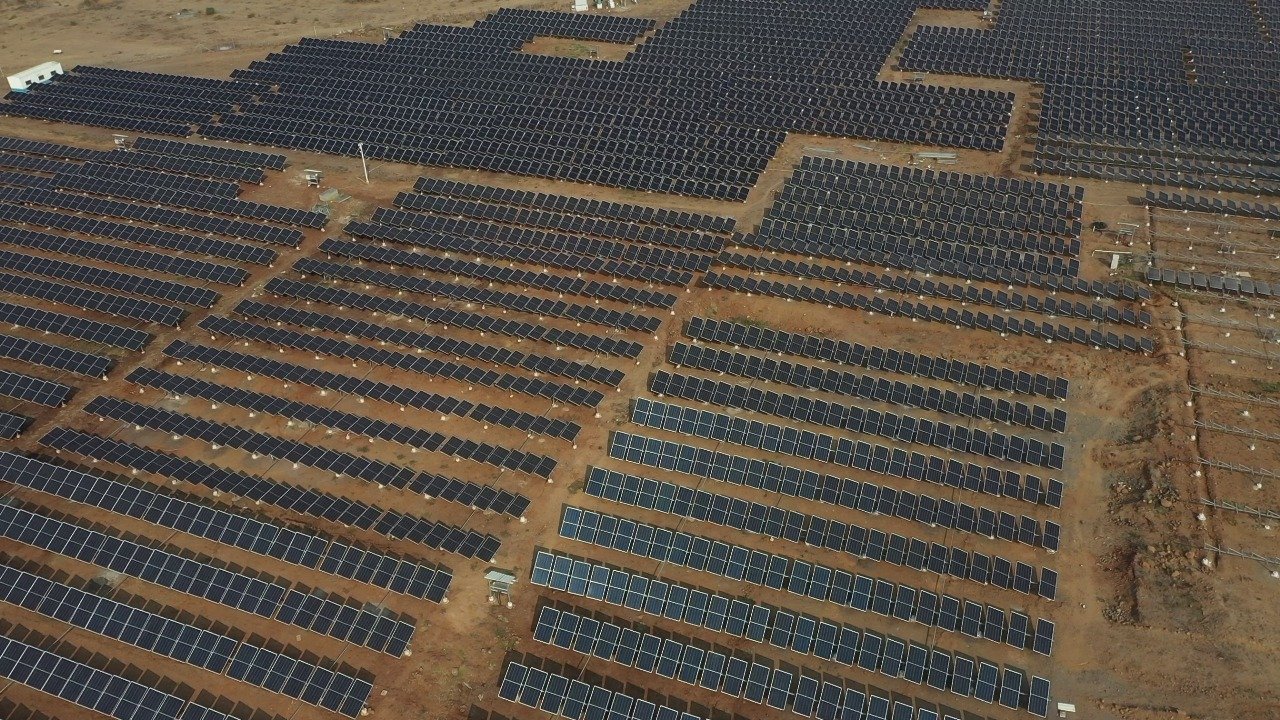
Global Trends in Solar Panel Generation
- Unprecedented Capacity Expansion: In 2024, global solar photovoltaic (PV) capacity additions reached approximately 446 GW, elevating the total installed capacity to 1.6 terawatts (TW). This marks a significant increase from 1.2 TW in 2022, underscoring the rapid acceleration of solar adoption worldwide.
- Surging Electricity Generation: Solar power generation grew by 30% in 2024, the highest rate since 2017, contributing over 2,000 terawatt-hours (TWh) and accounting for 7% of global electricity production. Notably, more than half of this growth originated from China.
Europe
- Record Output: Europe’s solar electricity production increased by over 30% in the first quarter of 2025 compared to the same period in 2024, reaching nearly 68 TWh. This surge positions Europe to set a new annual solar output record.
- Expanding Solar Share: In March 2025, solar energy contributed 8.2% of Europe’s utility-supplied electricity, up from 6% a year earlier. Countries like Greece, Germany, the Netherlands, and Spain are already generating over 10% of their electricity from solar, with projections suggesting over 25% during the summer peak.
United States
- Clean Energy Dominance: In 2024, 93% of new U.S. energy capacity came from low-emission sources like wind, solar, and batteries. The Energy Information Administration projects that solar and battery power will account for 81% of new capacity in 2025.
- Trade Policy Impacts: The U.S. has finalized significant tariffs on solar cells imported from Southeast Asia, with rates varying by company and country. While these measures aim to protect domestic manufacturers, they may also lead to increased costs and potential slowdowns in solar adoption.
China
- Manufacturing Powerhouse: China continues to dominate the global solar supply chain, producing over 80% of essential materials like polysilicon, glass, and solar cells. This dominance has been pivotal in reducing global module prices and accelerating solar adoption worldwide.
- Ethical Considerations: Concerns over human rights abuses in regions like Xinjiang, where a significant portion of polysilicon is produced, have led countries like the UK to prohibit investments in solar panel projects linked to forced labor.
Challenges in Solar Panel Generation
1. Supply Chain Dependencies and Ethical Concerns
China dominates the global solar supply chain, producing over 80% of essential materials like polysilicon, wafers, and solar cells. This concentration raises concerns about supply chain resilience and ethical sourcing, particularly regarding reports of forced labor in regions like Xinjiang. In response, countries like the UK have implemented policies to avoid using solar panels linked to such practices, potentially increasing costs and complicating procurement strategies.
2. Trade Policies and Tariffs
Protectionist measures, such as tariffs on imported solar components, have been introduced in countries like the United States to bolster domestic manufacturing. While these policies aim to strengthen local industries, they can also lead to higher costs for solar installations and slow down adoption rates, especially in the residential sector.
3. Grid Integration and Infrastructure Limitations
The rapid expansion of solar energy has outpaced the development of grid infrastructure in many regions. Challenges include:
- Interconnection Delays: Lengthy processes to connect new solar installations to the grid.
- Transmission Bottlenecks: Insufficient capacity to transport electricity from solar-rich areas to demand centers.
- Curtailment Issues: Excess solar generation during peak times leading to wasted energy.
Addressing these issues requires significant investment in grid modernization and energy storage solutions.
4. Labor Shortages and Workforce Development
The solar industry’s growth has led to a high demand for skilled labor, including installers, electricians, and engineers. However, the current workforce development has not kept pace, resulting in labor shortages that can delay projects and increase costs.
5. Technological and Environmental Challenges
While advancements like perovskite solar cells and bifacial panels offer higher efficiencies, they also present challenges:
- Durability and Longevity: New technologies may not yet match the lifespan of traditional silicon panels.
- Environmental Concerns: Issues like saltwater corrosion in floating solar farms and land use conflicts can arise.
6. Financial and Policy Uncertainties
Fluctuating policies and incentives can create an unpredictable environment for investors and consumers. For instance, changes in net metering policies or reductions in subsidies can affect the financial viability of solar projects.
Technological Innovations in Solar Panel Generation
Technology is rapidly transforming the solar panel generation landscape:
1. Bifacial Solar Panels
Bifacial solar panels capture sunlight from both their front and rear sides, increasing overall energy generation. In environments with reflective surfaces like snow or sand, these panels can produce up to 30% more electricity compared to traditional monofacial panels.
2. Perovskite and Tandem Solar Cells
Perovskite solar cells are gaining attention due to their high efficiency and potential for low-cost production. When combined with traditional silicon cells in tandem configurations, they can surpass the efficiency limits of single-junction cells. Research indicates that perovskite-only cells have achieved efficiencies up to 26%, and tandem cells are expected to exceed this benchmark in laboratory settings.
3. AI-Driven Smart Solar Systems
The integration of artificial intelligence (AI) and real-time data analytics into solar energy systems is optimizing performance and maintenance. AI algorithms can predict energy production, detect anomalies, and schedule maintenance proactively, thereby reducing downtime and operational costs.
4. Flexible and Wearable Solar Technologies
Advancements in flexible solar panels are enabling their integration into fabrics and wearable devices. These ultra-thin, lightweight solar cells can be embedded into clothing, backpacks, and other textiles, providing portable power sources for various applications. While their efficiency is currently lower than rigid panels, ongoing research aims to improve their performance and durability.
5. Agrivoltaics: Combining Agriculture and Solar Energy
Agrivoltaic systems involve the simultaneous use of land for both agriculture and solar energy production. By installing solar panels above crops, farmers can generate electricity while providing shade that can reduce water evaporation and protect plants from extreme weather, potentially enhancing crop yields.
6. Top Efficient Solar Panels in 2025
The most efficient solar panels available in 2025 include:
- Maxeon 7 (445W): 24.1% efficiency
- Canadian Solar TOPHiKu6 (470W): 23% efficiency
- REC Alpha Pure RX (470W): 22.6% efficiency
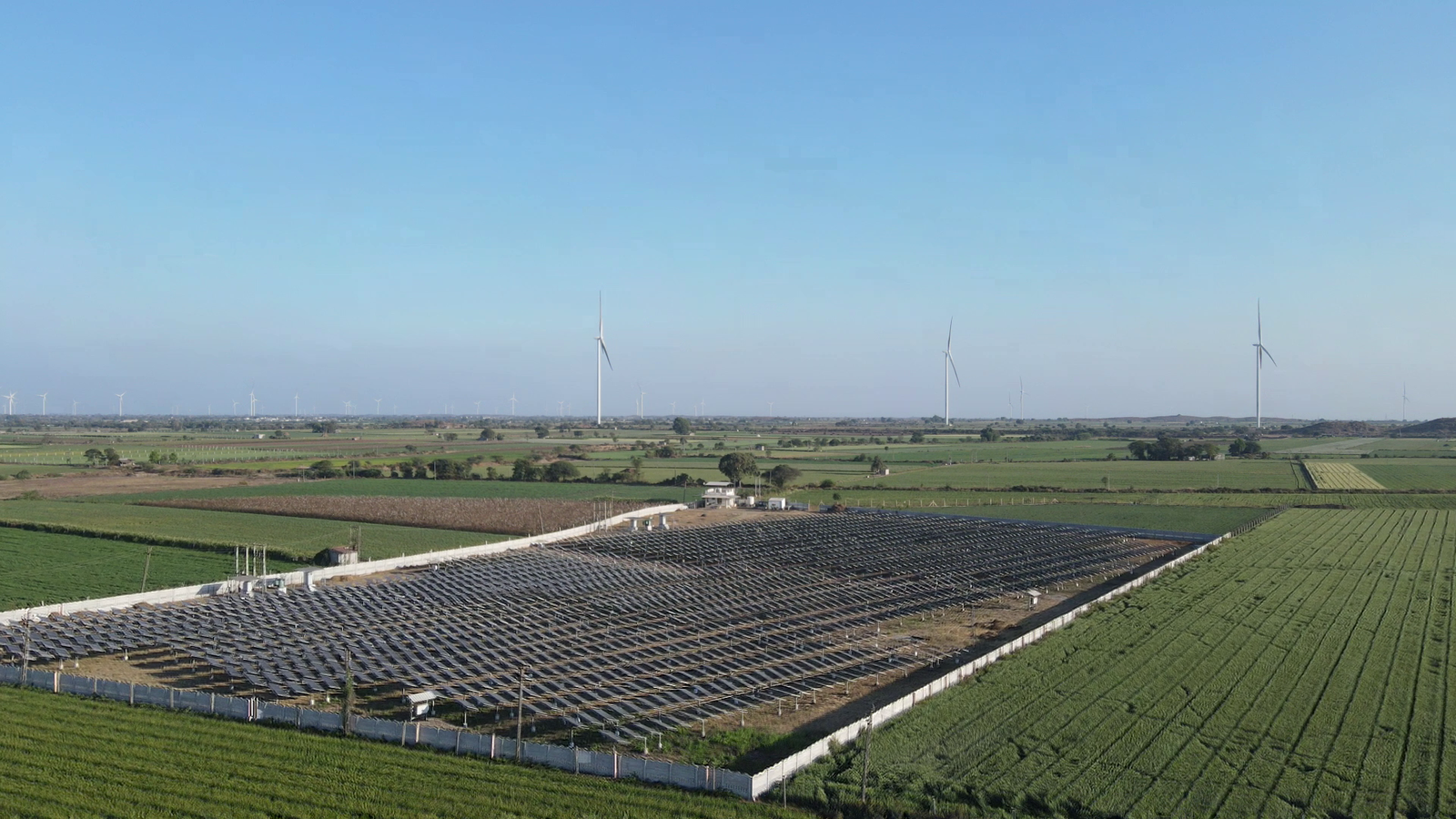
Government Policies and Subsidies Supporting Solar Panel Generation
1. PM Surya Ghar: Muft Bijli Yojana
Launched in February 2024, this flagship scheme aims to empower one crore households with rooftop solar installations. Key features include:
- Subsidy Structure:
- ₹30,000 per kW for systems up to 2 kW.
- ₹18,000 per kW for additional capacity between 2 to 3 kW.
- Maximum subsidy capped at ₹78,000 for systems above 3 kW.
- Benefits:
- Provides up to 300 units of free electricity per month.
- Offers collateral-free loans up to ₹2 lakh at a 6.75% interest rate through 12 public sector banks.
- Eligibility:
- Indian citizens owning a legal residential property with sufficient rooftop space.
- Applicants should not have previously availed similar solar subsidies.
- Application Process:
- Apply online via the official portal: pmsuryaghar.gov.in.pmsuryaghar.gov.in+1Wikipedia+1
2. Grid-Connected Rooftop Solar Programme – Phase II
Managed by the Ministry of New and Renewable Energy (MNRE), this program offers:
- Central Financial Assistance (CFA):
- Subsidies for residential consumers under Component-A.
- Incentives for Distribution Companies (DISCOMs) under Component-B.
- Implementation:
- Applications can be submitted through DISCOMs or the national portal.
3. PM-KUSUM Scheme (Kisan Urja Suraksha evam Utthaan Mahabhiyan)
This scheme focuses on promoting solar energy in the agricultural sector:
- Components:
- Installation of standalone solar pumps.
- Solarization of existing grid-connected pumps.
- Development of decentralized solar power plants.
- Objective:
- Reduce farmers’ dependence on diesel and grid electricity.
4. Central Public Sector Undertaking (CPSU) Scheme – Phase II
Aimed at enhancing domestic manufacturing and reducing import dependency:
- Target:
- Installation of 12 GW of solar capacity using domestically manufactured PV modules.
- Recent Update:
- The MNRE has extended the commissioning deadline for certain projects under this scheme to December 2025, addressing challenges like limited availability of domestic PV modules and infrastructure issues.
Tips for Maximizing Solar Panel Generation
Here are expert tips to get the most out of your solar panel generation system:
- Regular Maintenance: Keep panels clean and free from debris.
- Monitoring Systems: Use smart monitoring to detect performance issues.
- Correct Placement: Ensure optimal tilt and orientation.
- Energy-Efficient Appliances: Reduce your overall electricity consumption.
- Timely Upgrades: Upgrade outdated components for better performance.
Future of Solar Panel Generation
The future of solar panel generation in 2025 is poised for transformative growth, driven by technological advancements, supportive policies, and a global commitment to sustainable energy. Innovations such as perovskite and bifacial solar panels are enhancing efficiency and energy capture, while smart solar systems integrating AI and IoT are optimizing performance and grid management. Energy storage solutions, including solid-state batteries, are addressing intermittency challenges, ensuring a reliable solar power supply. Building-integrated photovoltaics (BIPV) are seamlessly integrating solar panels into architectural designs, expanding their application beyond traditional installations.
Globally, solar panel generation is experiencing rapid growth, with countries like India and the United States setting ambitious targets for solar capacity expansion. Policy support, such as tax credits and incentives, is accelerating adoption, while international collaborations are fostering knowledge sharing and technology transfer. Despite challenges like trade tariffs and supply chain constraints, the solar panel generation industry is resilient, with increasing investments and innovations paving the way for a sustainable energy future.
Conclusion
In conclusion, solar panel generation is rapidly evolving, driven by cutting-edge technological innovations and a growing commitment to sustainability. As solar energy becomes more accessible, efficient, and cost-effective, the global reliance on solar panel generation will continue to grow. With advancements in solar panel efficiency, storage solutions, and policy support, the future of solar panel generation looks brighter than ever. Whether it’s for residential, commercial, or industrial use, solar panel generation provides a renewable energy source that can power the world sustainably.
At Soleos Solar, we are committed to harnessing the power of solar panel generation to create a cleaner, greener future. If you’re ready to make the switch to solar energy or explore how solar panel generation can benefit your home or business, get in touch with us today. Let’s work together to reduce your carbon footprint and unlock the potential of solar panel generation for a brighter tomorrow.
Frequently Asked Questions (FAQs)
1. What is Solar Panel Generation?
A: Solar panel generation refers to the process of converting sunlight into electricity using solar panels. This process involves photovoltaic (PV) cells that absorb sunlight and convert it into electrical energy. Solar panel generation plays a crucial role in producing clean, renewable energy and reducing reliance on fossil fuels.
2. How Does Solar Panel Generation Work?
A: Solar panel generation works by utilizing photovoltaic cells within solar panels that capture sunlight. When sunlight hits these cells, it excites electrons, creating an electric current. This current is then converted into usable electricity by an inverter. The electricity generated can power homes, businesses, and even be fed back into the grid.
3. What Are the Key Components of a Solar Panel Generation System?
A: A solar panel generation system typically includes solar panels, an inverter to convert DC power to AC power, a mounting system, a battery storage system (optional), and a grid connection system (if applicable). These components work together to ensure efficient energy generation and use.
4. What Factors Influence the Efficiency of Solar Panel Generation?
A: Several factors affect the efficiency of solar panel generation, including the angle and orientation of the panels, geographical location, weather conditions, shading, and the type of solar panels used. Regular maintenance and cleanings also contribute to optimal performance.
5. Can Solar Panel Generation Be Used for Businesses?
A: Yes, solar panel generation can significantly benefit businesses by reducing electricity bills, providing energy independence, and contributing to sustainability efforts. Many businesses are now adopting solar power systems to lower operational costs and improve their green energy profile.
6. What Are the Benefits of Solar Panel Generation?
A: The main benefits of solar panel generation include reduced energy bills, low environmental impact, energy independence, increased property value, and government incentives. Solar power also helps mitigate climate change by reducing greenhouse gas emissions.
